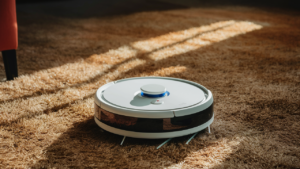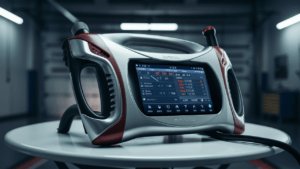Imagine this: it’s a warm, sunny day, and your inflatable pool is set up in the backyard, ready to offer a refreshing escape. But there’s a catch.
You want to keep that crystal-clear water inviting and safe, without relying on harsh chemicals. This might sound challenging, but it’s entirely possible, and you’re about to discover how. In this guide, you’ll learn easy, natural methods to maintain clean water that not only protect your loved ones but also the environment.
Dive in and see how simple it can be to enjoy your pool with peace of mind. Your perfect, chemical-free oasis is just a few steps away!
Regular Skimming
Skim the water surface daily to remove debris and dirt. Regular skimming helps maintain cleanliness without chemicals. Keep the pool inviting and fresh for every splash.
Keeping your inflatable pool water clean without chemicals can be a challenge, but regular skimming is a simple and effective method to keep your pool inviting and clear. Skimming involves removing debris from the surface of the water. It’s a task that doesn’t require any special skills, just a little bit of your time and effort. Regular skimming not only helps maintain clean water but also ensures a pleasant swimming experience for everyone.
Why Skimming Is Essential
Skimming removes leaves, bugs, and other debris that can accumulate on the water’s surface. If you ignore this step, these materials will eventually sink and make the pool water cloudy. Skimming daily helps prevent this problem before it starts.
Tools You’ll Need For Effective Skimming
A simple handheld skimmer or pool net is all you need. These tools are affordable and easy to use. Many pool owners find that a telescopic pole is helpful, allowing you to reach every corner of the pool.
Best Time For Skimming
Morning and evening are ideal times to skim. Early in the day, you can clear out debris that accumulated overnight. In the evening, skimming helps remove anything that fell in during the day, keeping your pool inviting for an evening dip.
Making Skimming A Habit
Incorporate skimming into your daily routine. Set a reminder on your phone if you tend to forget. After a few weeks, it will become second nature and you’ll notice how much clearer your pool stays.
Personal Experience: Skimming Success
When I started skimming daily, the difference was noticeable. The water stayed clear longer, and I spent less time dealing with stubborn algae. It was a simple change that paid off in a big way.
Have you tried skimming regularly? What differences have you noticed in your pool? Give it a try and see how this simple task can transform your pool maintenance routine.
Natural Filtration Methods
Keeping inflatable pool water clean naturally can be challenging. Chemical-free methods are gaining popularity. These methods are eco-friendly and safe. Natural filtration is a key approach. It keeps pool water clear without harmful substances. Let’s explore effective ways to filter pool water naturally.
Using Sand Filters
Sand filters are a popular choice for natural filtration. They use sand to trap dirt and debris. Water flows through the sand, leaving impurities behind. This keeps the water clean. Sand filters are easy to maintain. Simply backwash them to remove trapped debris. Regular cleaning ensures efficiency.
Homemade Filters
Homemade filters are another option for natural filtration. They can be crafted from everyday materials. Use items like coffee filters and charcoal. Create a simple filter system. Place the materials in a container. Water passes through, and impurities are trapped. This method is cost-effective. It requires minimal effort and resources.
Baking Soda For Ph Balance
Baking soda helps maintain the pH balance in inflatable pool water. It keeps the water clear and fresh. Simple and effective, it offers a chemical-free way to enjoy clean pool water.
Keeping your inflatable pool water clean without chemicals might seem challenging, but it can be done effectively with everyday items like baking soda. Known for its versatility, baking soda can help maintain the pH balance of your pool water. This simple, affordable solution can enhance your swimming experience, ensuring the water remains safe and pleasant for everyone.
How Does Baking Soda Affect Pool Water?
Baking soda is a natural alkaline compound. It can raise the pH level of your pool water if it becomes too acidic. This balance is crucial for preventing skin irritation and preserving your pool’s structure. Imagine enjoying a swim without the worry of harsh chemicals affecting your skin or the pool’s material.
Understanding Ph Levels
pH levels indicate how acidic or alkaline the water is. Ideally, pool water should have a pH between 7.2 and 7.8. If your pool’s pH is too low, it can lead to discomfort and even damage the pool lining. Have you ever felt your eyes sting while swimming? That’s often due to improper pH levels.
Steps To Use Baking Soda
– Test the Water: Use a pH testing kit to check the current level.
– Add Baking Soda: If the pH is below 7.2, sprinkle baking soda evenly across the pool.
– Mix Thoroughly: Allow the water to circulate for a few hours. This helps the baking soda dissolve completely and ensures even distribution.
How Much Baking Soda Should You Use?
A general rule is to add 1.5 pounds of baking soda for every 10,000 gallons of water to raise the pH by about 0.1. If you’re unsure, start with a smaller amount and test the pH before adding more. Have you ever tried adjusting the pH levels yourself? It’s surprisingly straightforward once you get the hang of it.
Benefits Of Using Baking Soda
Using baking soda is cost-effective and easy. It avoids the harsh effects of traditional chemicals, protecting your skin and the pool’s integrity. Plus, it’s a common household item, meaning you likely have some at home already. Why not try it for yourself and see the difference it makes?
Is It Safe?
Yes, baking soda is safe to use in your pool. It’s a natural product, reducing the risk of skin irritation compared to chemical alternatives. Wouldn’t you prefer a swim that’s gentle on your skin and eyes, especially for the kids?
By using baking soda to maintain the pH balance of your inflatable pool, you can enjoy clean and comfortable swimming without relying on harsh chemicals. Give it a try, and notice how much more enjoyable your summer pool days can be.
Vinegar As A Cleaning Agent
Keeping your inflatable pool water clean without chemicals can be tricky. Vinegar is a natural and effective cleaning agent. It’s safe for people and the environment. This common household item offers a simple solution. With vinegar, you can maintain a clean pool easily.
How Does Vinegar Work?
Vinegar is acidic. Its acidity helps break down dirt and grime. This makes it a powerful cleaner for your inflatable pool. The acidity also helps kill bacteria naturally. It’s an effective way to keep your pool water clean.
Preparing The Vinegar Solution
Mix vinegar with water for a cleaning solution. Use a ratio of one part vinegar to three parts water. This mixture is safe for your pool. Stir well to ensure it mixes properly.
Applying The Vinegar Solution
Use a soft cloth or sponge. Dip it in the vinegar solution. Gently scrub the pool’s surface. Pay attention to areas with dirt or algae. Rinse with clean water after scrubbing.
Benefits Of Using Vinegar
Vinegar is affordable. It’s available in most stores. It’s also non-toxic and eco-friendly. Using vinegar reduces chemical exposure. It keeps your pool safe and clean for everyone.
Essential Oils For Freshness
Keeping your inflatable pool water fresh without chemicals can be simple. Essential oils offer a natural way to maintain cleanliness. They not only freshen the water but also provide a pleasant aroma. With the right choice of oils, you can enjoy a clean and refreshing pool experience. Below, explore two popular essential oils that can help keep your pool water fresh.
Tea Tree Oil
Tea tree oil is known for its antibacterial properties. It helps eliminate germs and bacteria in your pool water. Just a few drops can make a big difference. It also offers a fresh, medicinal scent, adding to the pool’s freshness. Simply mix it with water and spread evenly in the pool. Regular use can keep your pool water healthier and cleaner.
Lavender Oil
Lavender oil is another great option for pool freshness. It has a calming aroma, making your pool time relaxing. This oil also has antibacterial qualities. It helps keep the water free from unwanted bacteria. A few drops in your pool can transform the atmosphere. Enjoy a soothing swim with lavender’s natural aroma. It’s a simple, effective way to enhance your pool experience.
Utilizing Plants For Purification
Plants can naturally clean inflatable pool water. Use floating plants like water lilies and duckweed. They absorb impurities, keeping the water fresh and chemical-free.
Keeping your inflatable pool water clean without using chemicals might sound like a challenge. However, nature provides an excellent solution through plants. Utilizing plants for purification is an eco-friendly approach that not only keeps your pool water clean but also adds a touch of beauty to your backyard oasis. Let’s explore how you can use both floating and submerged plants to maintain crystal-clear water in your inflatable pool.
Floating Plant Options
Floating plants are a fantastic choice for your pool. They cover the surface and help block sunlight, which in turn reduces algae growth. Plants like water lettuce and duckweed are excellent options.
These plants absorb excess nutrients from the water, which helps keep it clear. Plus, they are easy to remove and replace if needed. Imagine lying by your pool, watching these plants gently float on the surface, knowing they’re working to keep your water clean.
Submerged Plant Benefits
Submerged plants are like the unsung heroes of pool purification. They grow beneath the surface and play a critical role in oxygenating the water. Hornwort and elodea are great examples of submerged plants.
These plants not only produce oxygen but also act as natural filters by absorbing pollutants. They create a balanced ecosystem within your pool. Have you ever noticed how clear a natural pond can be? That’s often due to the presence of these submerged plants.
By choosing the right plants, you can maintain your inflatable pool water without harsh chemicals. Have you ever tried using plants for water purification? If not, now might be the perfect time to give it a shot. You’ll not only enjoy cleaner water but also contribute to a more sustainable environment.
Sunlight For Algae Control
Using sunlight to control algae in your inflatable pool is smart. Algae thrive in dark, damp environments. Sunlight can help reduce their growth. Natural sunlight acts as a powerful disinfectant. It keeps the water cleaner and healthier.
Understanding Algae Growth
Algae need sunlight to grow. But too much sunlight can kill them. This sounds confusing, but it’s true. Direct sunlight heats the water. It makes conditions tough for algae to thrive. They prefer cooler, shaded areas.
Positioning Your Pool
Place your pool in a sunny spot. This helps control algae naturally. Choose an area with maximum sun exposure. Avoid shaded spots under trees or buildings. More sunlight means less algae growth.
Daily Sun Exposure
Let your pool water enjoy the sun each day. Even a few hours help. Rotate the pool if needed. Ensure all parts get sun exposure. Regular sunlight keeps algae at bay.
Covering The Pool At Night
Cover your pool when the sun goes down. This keeps debris out. It also prevents cool conditions ideal for algae. A pool cover keeps water warmer. It reduces the chance for algae to grow.
Balancing Sunlight And Shade
Too much heat can cause evaporation. Balance sunlight with occasional shade. Use umbrellas or shade cloth if needed. This prevents water from getting too hot. It also saves water from evaporating.
Monitor Water Temperature
Keep an eye on the water temperature. Ideal temperatures hinder algae growth. Use a pool thermometer to check. Adjust the pool’s position if needed.
Regular Sunlight And Cleanliness
Sunlight alone won’t keep your pool clean. Regular maintenance is crucial. Remove debris and leaves daily. Use a pool net or skimmer. Clean water resists algae better.
Regular Water Circulation
Maintaining clean water in your inflatable pool is vital. Regular water circulation plays a crucial role. It helps prevent the growth of algae and bacteria. Circulating the water keeps it fresh and clear. This method avoids the need for harsh chemicals. Below are some effective ways to ensure proper water movement.
Use A Solar-powered Pool Pump
A solar-powered pool pump is eco-friendly and cost-effective. It uses sunlight to circulate the water. This method is energy-efficient and easy to install. A solar pump helps keep your pool water clean naturally.
Install A Manual Hand Pump
A manual hand pump is a simple solution. It allows you to circulate water manually. This method requires some effort but is effective. It helps ensure water moves regularly. Your pool stays cleaner without chemicals.
Stir The Water With A Pool Skimmer
A pool skimmer can help move the water. Use it to gently stir the pool. This action helps distribute water evenly. It prevents stagnant areas where algae can grow. Regular skimming keeps your pool fresh.
Utilize A Small Fountain Or Sprinkler
Consider adding a small fountain or sprinkler. These can keep the water moving gently. They add a bit of fun to your pool too. Moving water reduces the chance of debris settling. Your pool stays cleaner and more inviting.
Proper Pool Cover Usage
Keeping inflatable pool water clean without chemicals can be challenging. A proper pool cover can help. It shields your pool from debris and contaminants. This reduces the need for frequent cleaning. Using a pool cover effectively ensures cleaner water for longer periods.
Understanding Pool Covers
Pool covers come in various materials and designs. They provide protection against dirt and leaves. Choose a cover that fits snugly over your pool. A well-fitted cover prevents debris from entering the water.
Types Of Pool Covers
Solar covers warm the water using sunlight. They reduce evaporation and keep the water clean. Mesh covers filter out debris while allowing rainwater to pass. Solid covers block all dirt and light, keeping your pool pristine.
How To Use A Pool Cover
Place the cover over the pool after each use. Ensure it sits tightly to prevent gaps. Check for tears or holes regularly. Repair any damage promptly to maintain effectiveness.
Maintaining Your Pool Cover
Clean your pool cover often to remove dirt. Use mild soap and water. Dry thoroughly before storing to prevent mold. Store in a cool, dry place when not in use.
Benefits Of Proper Cover Usage
Proper usage extends the pool’s lifespan. It saves you time and effort in cleaning. It also reduces water loss through evaporation. Your pool stays cleaner, longer.

Routine Water Replacement
Regularly replace water to maintain inflatable pool cleanliness without chemicals. Fresh water reduces bacteria and dirt buildup. Simple yet effective.
Keeping your inflatable pool water clean without chemicals can be a challenge, but routine water replacement is a simple yet effective strategy. Regularly swapping out the water ensures freshness, limits the buildup of impurities, and keeps your pool inviting. Plus, it’s a natural way to maintain a cleaner pool environment without the need for harsh chemicals.
How Often Should You Replace The Water?
Deciding how frequently to change the water depends on several factors, including the pool’s size and usage. If your pool sees lots of splashing and playing, consider replacing the water every week. For less frequent use, every two weeks might suffice.
Don’t wait for the water to turn cloudy. By sticking to a routine, you’ll keep it clear and inviting.
Signs Your Pool Needs Fresh Water
Look out for signs like a change in water clarity or an unusual smell. These are hints that it’s time for fresh water.
If your pool’s water feels sticky or leaves residue on the skin, it’s another indicator. Trust your senses and take action before it becomes unpleasant.
Effective Drainage Techniques
Draining the pool can be straightforward. Use a garden hose siphon if your pool doesn’t have a built-in drain.
Ensure the area where you’re draining the water can handle the overflow to prevent any mess. You might find it helpful to have a designated drainage spot in your yard.
Refilling: Tips For Fresh Water
When refilling, use clean tap water or filtered rainwater. Avoid using water that might introduce contaminants.
Filling the pool during cooler parts of the day can help minimize evaporation. This ensures your pool stays full and inviting longer.
Conserving Water
While routine replacement is crucial, you can still be mindful of water usage. Consider using the old pool water for gardening or cleaning tasks.
This way, you’re not wasting resources, but instead, giving them a new purpose. How do you balance keeping your pool clean with conserving water?
Routine water replacement is a practical approach for maintaining a fresh pool without chemicals. By keeping an eye on water quality and being mindful of conservation, you can enjoy a cleaner, more inviting pool.
Frequently Asked Questions
Can You Put Anything In An Inflatable Pool To Keep It Clean?
Use chlorine tablets or pool shock to sanitize your inflatable pool. Regularly skim debris and vacuum dirt. Maintain proper water circulation with a small pump. Test water pH levels frequently and adjust as needed. These steps help keep your pool clean and safe for swimming.
How Long Can You Leave Water In An Inflatable Pool Without Chlorine?
Water in an inflatable pool without chlorine should be changed every 24 to 48 hours. Algae and bacteria can grow quickly. Regular water replacement ensures safety and cleanliness. Consider using a pool cover to minimize debris. Always check for signs of contamination like cloudiness or odor.
How To Keep Pool Water Clean Naturally?
Use baking soda to maintain pH balance. Skim debris daily with a pool net. Install a natural filter like sand or zeolite. Introduce beneficial bacteria to break down contaminants. Plant water lilies or other aquatic plants to absorb pollutants and reduce algae growth.
What Can I Put In My Kiddie Pool To Keep It Clean?
Use a small amount of chlorine or bleach to disinfect the water. Add a pool cover to prevent debris. Regularly skim the surface to remove leaves and insects. Drain and refill the pool weekly to maintain cleanliness.
Conclusion
Keeping your inflatable pool clean without chemicals is easy. Simple steps make a big difference. Use a pool cover to block debris. Regularly skim the surface to remove leaves. Invest in a good pool net. Change the water frequently to avoid stagnation.
A small pump can help circulate the water. Consider using natural filters, like sand. These methods keep water fresh and safe. Enjoy a clean pool all summer long. Happy swimming!







